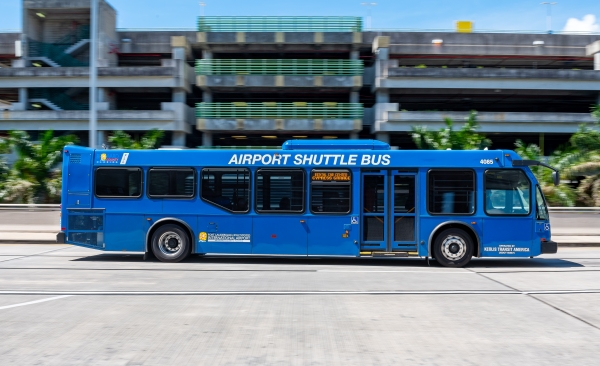20 Best Suggestions For Picking Employee Shuttle Websites
20 Best Suggestions For Picking Employee Shuttle Websites
Blog Article
Top 10 Suggestions To Aid You In Planning And Covering Your Employee Shuttle Transportation Routes
Here are 10 great tips for planning the routes and covering of the employee shuttle service:
1. Understanding the needs of employees
Conduct focus groups or surveys to gain a better understanding of the location of employees as well as their preferred shuttle schedules and any specific needs (such as accessibility). This is essential to design routes that increase employee satisfaction.
2. Analyze traffic patterns
Check out the traffic patterns in your local area and look for the peak times. Utilize tools like Google Maps traffic data to identify congested routes and be sure to avoid them during shuttle times. This can reduce the chance of delays and provide the smoothest trip.
3. Utilize Technology
Use software for route planning which optimizes routes based on real-time traffic information and employee schedules. Shuttle apps allow you to adjust routes automatically, ensuring that you're always giving the best service possible.
4. Establish Strategic Pickup Points
Identify central locations for pickup points that are easily accessible to the majority of employees. To maximize coverage, consider locations near major intersections, transportation hubs, as well as residential zones.
5. Create a flexible schedule
Plan a shuttle service that is flexible enough to accommodate the varied work hours of your employees. Shuttles can be provided during peak hours and off-peak hours to accommodate various shifts.
6. Create a feedback loop
Encourage your employees for feedback on shuttle service. Make use of this feedback to make adjustments to routes, schedules or pickup points. If you regularly assess the satisfaction of employees, you can maintain a service that is tailored to their needs.
7. Monitor and analyze usage data
Monitor the use of shuttles to identify the most popular routes and those that require adjustments. These data is used to make informed choices about how to improve services and where to put resources.
8. Promote carpooling and ridesharing
Encourage employees using carpooling schemes in addition with shuttle services. This can reduce shuttle needs and give more flexibility. Apps that allow ridesharing could enhance this effort and reduce the overall costs of transportation.
9. Consider Environmental Impact
Shuttles that are energy efficient can reduce emissions. Encourage the utilization of electric or hybrid vehicles for the shuttle you use. This is not just a good way to support sustainability, but also to help employees who are environmentally conscious.
10. Safety and Compliance
Check that the shuttles comply with the safety and legal requirements. Regular maintenance of vehicles, as well as training and certification for drivers and insurance coverage are all a part of this. Transportation planning should put security first on its list.
These methods can assist you in creating an employee shuttle system that is effective and efficient, meets your employees' needs and maximizes utilization of resources. Follow the most popular use this link on employee transportation for blog tips including shuttle service near me, los angeles airport shuttle bus, los angeles airport transfers, airport shuttle home pick up, shuttle van, airport shuttle to airport, airport transportation services, luxury transportation services, shuttle to airport near me, private car service and more.
10 Top Tips For Security And Reliability In Corporate Event Transportation Services
Here are 10 suggestions to help corporate event transportation regarding safety and dependability:
1. Conduct Thorough Vehicle Inspections
Prior to the event, make sure that all vehicles used for transportation undergo thorough inspections. To ensure that the most critical components such as brakes, tire pressure, seatbelts, and lights are functioning properly, inspect their condition. Regular maintenance and inspections prior to departure can help reduce the risk of mechanical failures.
2. Employ qualified and experienced drivers
Verify that all drivers possess an active copyright, have a valid licence, and have an unblemished driving record. Examine their driving history and conduct background checks. To ensure safety and security, you need drivers who are well-trained and experienced.
3. Safety Training Programs
Provide comprehensive training to all employees and drivers of the transportation service. Training should cover defensive driving methods in addition to emergency procedures and customer service skills. Regularly scheduled training sessions are crucial to keep safety in the minds of drivers and to prepare them for various situations.
4. Establish Clear Emergency Protocols
Establish and communicate clearly emergency procedures to passengers and drivers alike. This covers protocols for accidents, medical emergencies, and other emergencies that might arise. Drills are conducted to improve security and make sure that everyone knows what to do in the event of an emergency.
5. Use GPS Tracking and Fleet Management Software
Install GPS tracking systems in all vehicles to monitor their location in real time. This technology allows transportation coordinators to track shuttles, optimize routes and react quickly to any problems that might occur. The software also helps to monitor vehicle maintenance and performance.
6. Make sure you have adequate insurance coverage
Review and maintain a comprehensive insurance coverage on all transport operations. This should include coverage for liability insurance, accidents, and injuries that could occur during transportation. Insurance protects the organization and its employees and provides peace of mind.
7. Be clear with attendees.
Every participant should be aware about transportation details like the pickup location, timetables and contact details. This helps manage expectations and makes attendees feel confident regarding their transportation arrangements.
8. Monitor Traffic and Weather Conditions
On the day of the event, you must keep an eye on traffic and weather. Prepare to alter schedules or routes as necessary to ensure that you arrive at the right time. Having a plan in place to deal with weather conditions or heavy traffic could improve the reliability of transportation services.
9. Get feedback and conduct post-event reviews
When the event is finished After the event, you can collect feedback from your guests on their travel experience. Be sure to inquire about safety, punctuality of service, as well as satisfaction. This will allow you to determine areas for improvement and ensure that the future transportation services conform to safety and reliability requirements.
10. Plan a contingency Plan
Create a contingency plan in case of unexpected events, such as vehicle breakdowns or driver absenteeism. This plan will provide alternate transportation options, as well procedures that should be followed in an emergency. Having contingency measures in place increases the security and makes sure that attendees are not left without transportation.
By following these guidelines, organizations can improve the safety and reliability of their transportation services for corporate events. Prioritizing the safety of attendees is not only beneficial to them however, it is also beneficial for the company. A reliable transportation service is a major factor in the overall performance of corporate events making sure that attendees enjoy a an enjoyable experience from beginning to the end. See the most popular corporate event transportation for blog info including global transport, logistics company near me, trailering services, us transport, vehicular transport, transportation logistics services, mgt logistics, transportation industry, logistics company near me, safe transportation and more.